About Antarctica: Ice and Glaciers
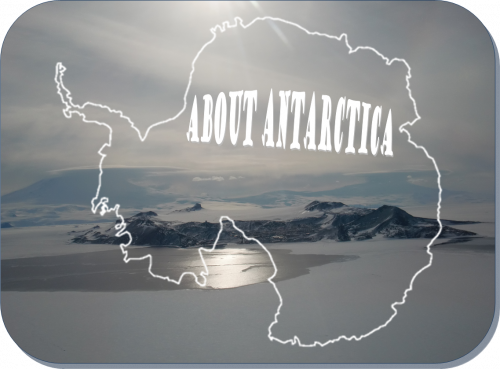 About Antarctica! Ice and Glaciers.
About Antarctica! Ice and Glaciers.
ICE AND GLACIERS
This journal is brought to you by…
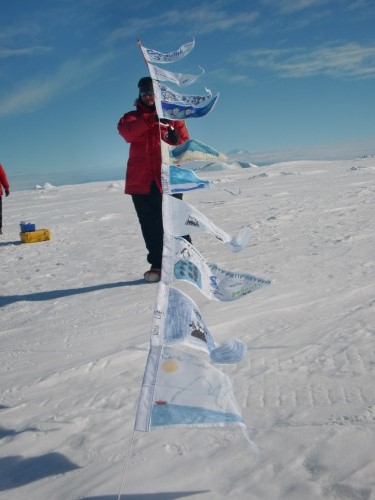 This journal is brought to you by…
This journal is brought to you by…
- Mrs. Lowe’s 3rd grade class at Crosswind
- Trey Johnson in 3rd grade at Arlington Elementary
- Catherine Hammons 6th grade-block 5 at Lausanne Collegiate School
- Andrea Hicks in 7th grade in Homeschool
- Mr. John Trego’s 6th grade class at Mirror Lake Middle School
- Crosswind Elementary Students:
- Nidhish Kalyana Kumar in 3rd grade
- Nicholas Poche in 4th grade
- Daniel Derieg in 2nd grade
- Noah Lee in 4th grade
- Carter Campbell in 3rd grade
Antarctica is a place literally covered in ice – at least 98% of it! Ice is everywhere, farther than the eye can see, thousands and thousands of square miles of endless ice. It’s hard to even imagine!
If you are like me, when I think of ice, it’s as those little cubes that float in my drink. Or if it’s wintertime, maybe the ice-covered streets and trees.
There are, however, many different kinds of ice – all of which can be found in Antarctica! (If you want to read up on all the different types of ice in Antarctica, take a look at this journal from my last journey here.
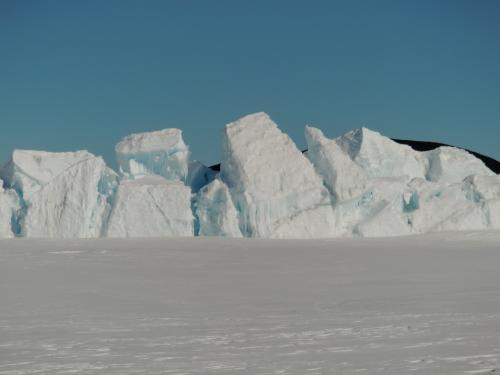 This is pretty much all I see down here – ice! Photo credit: Alex Eilers.
This is pretty much all I see down here – ice! Photo credit: Alex Eilers.
Watch your step!
All of this ice (and the constantly cold weather) leads to some pretty unique features, many of which can only be found in the Polar Regions. We will literally be working on some of these ice features – like ice sheets and ice shelves. And this is particularly important for our work here, because we are looking for seals near the Ross Ice Shelf. But, before we start, I have a few questions:
- What is an ice shelf?
- How does it form?
- What makes the ice shelf so perfect for the seals?
Let’s take a closer look!
What is an ice shelf?
To understand an ice shelf, let’s first talk about ice sheets. An ice sheet is an extremely thick slab of ice that covers a huge area of land (we’re talking thousands or even millions of square miles). The continent of Antarctica is covered by a huge ice sheet that is divided by the Transantarctic Mountains, creating the East Antarctic Ice Sheet and West Antarctic Ice Sheet.
An ice shelf is a little different. These are thick (measured in hundreds of meters) floating sheets of ice that connect to the ice sheet. There are about 10 ice shelves that ‘hug the coast’ of Antarctica. We can find the Weddell seals on the frozen sea ice (which thinner) near the Ross Ice Shelf.
There is an easy way to remember the difference between an ice sheet and an ice shelf.
Ice sheets ‘cover’ land like your bed sheets ‘cover’ your bed.
Ice shelves ‘hang’ off the side of the ice sheets like your shelves ‘hang’ on the wall.
Pretty neat way to remember, isn’t it?
How is an ice shelf formed?
That’s a complicated question but here’s a basic answer.
Ice sheets are constantly moving (very slowly, but they are moving) downward, often out to sea. Ice shelves begin to form when ice from an ice sheet oozes its way to the ocean. ‘If the ocean is cold enough, the new ice doesn’t melt right away. Instead, it may float on the surface and grow larger, as glacial ice behind it continues to flow into the sea.’
You may want to check out the great work being done at the National Snow & Ice Data Center, where I found some of this information.
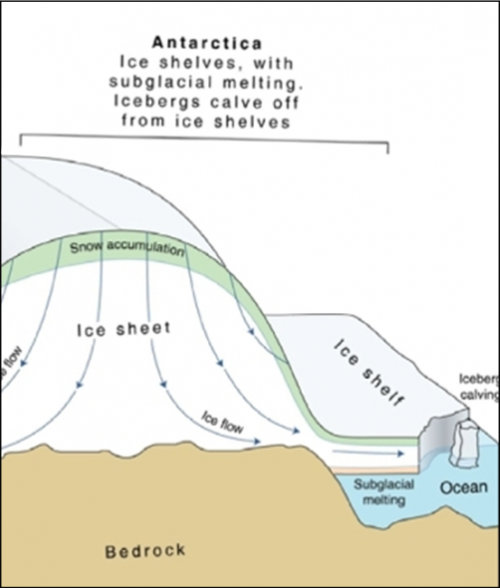 See how the ice flows toward the shelf from the sheet? Credit: UNEP Maps and Graphs; K. Steffen, CIRES, University of Colorado at Boulder, image cropped
See how the ice flows toward the shelf from the sheet? Credit: UNEP Maps and Graphs; K. Steffen, CIRES, University of Colorado at Boulder, image cropped
What makes the ice so perfect for the seals?
Several reasons! Seals use the sea ice (frozen sea water) to rest. We find the seals hauled out – pretty close to McMurdo Station – which is very convenient for us! There are sections close to the ocean, where the ice is relatively thin. This means you can often find cracks and holes in the ice. Seals use these cracks and holes to breathe and gain access to their haul-out spots.
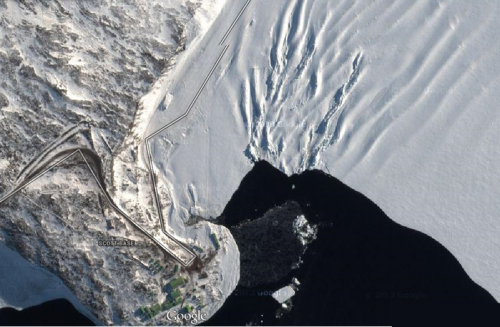 Can you see the ‘wrinkles’ in the ice? Credit: Google Maps
Can you see the ‘wrinkles’ in the ice? Credit: Google Maps
Take a look at this picture. A small section of Ross Island is pictured on the left-hand side, and if you look closely, Scott Base can be seen near the bottom. Look for the green buildings. Pictured in the upper right is part of sea ice near the Ross Ice Shelf. Can you see those ‘little wrinkles’ in the ice? This ice is the perfect place to find seals. Why? Because the ice is thin enough for the seals to take advantage of the holes and cracks in the ice and thick enough to support their weight (and ours) when they are hauled out.

